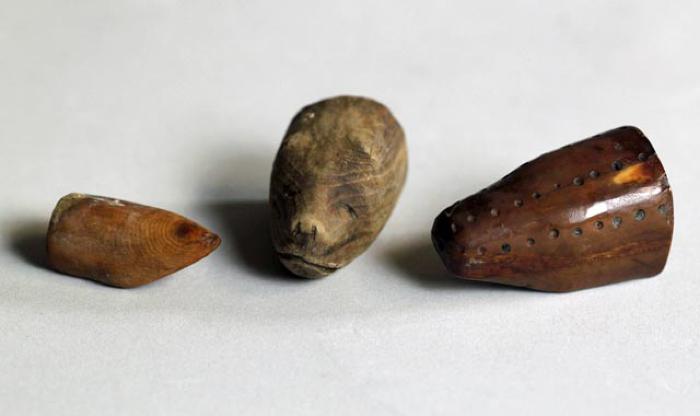Dice — Maqaq

Dice games are very common across North America. Native societies from New England to the Pacific Northwest enjoy tossing small objects in games of chance.
Russian traders recorded an Alutiiq dice game they called stopka, where players tossed a small figurine carved of bone and scored points based on how it landed. Archaeological finds illustrate that these dice were about an inch long and roughly bullet-shaped with a flat bottom. Some were also decorated. A die carved from fossilized ivory features rows of drilled holes. A wooden die features the head of a bear.
In Alutiiq, this dice game is known as maqaq. Today, players use a five-sided piece of wood or bone to play. Each side has a different point value. The largest side has a value of one point. The next largest side is worth two points, and so on, with the smallest side worth the most: five points.
Players sit in a circle and toss the die, adding up points based on how the piece falls. The goal is to make the die land on the smallest side to earn the most points. Players keep score with small, wooden tally sticks, which they place in the center of their circle. Players take a tally stick for each point they earn, putting the sticks in a pile in front of them. Once players have taken all the tally sticks from the center pile, they can take points from their opponents. The first player to collect sixteen points twice consecutively wins the game.
